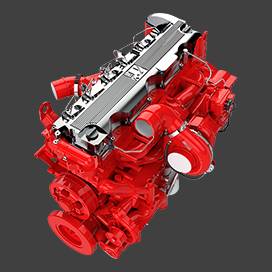Nov . 13, 2024 00:32 Back to list
how to get rust off brake drums
How to Get Rust Off Brake Drums
Rust can be a common nuisance for vehicle owners, particularly for those living in regions with high humidity or where vehicles are frequently exposed to moisture, dirt, and road salt. Brake drums, as integral components of the braking system, are particularly susceptible to rust. If left untreated, rust could not only affect the appearance of your brake drums but could also lead to decreased braking performance and safety issues. Here’s how you can effectively remove rust from brake drums.
Tools and Materials Needed
To begin the rust removal process, gather the following tools and materials
1. Safety Gear Safety goggles and gloves to protect your eyes and hands. 2. Jack and Jack Stands For safely lifting and securing your vehicle. 3. Lug Wrench To remove the wheel bolts. 4. Wire Brush or Sandpaper For scrubbing off rust. A wire brush attachment for a drill can speed up the process. 5. Rust Remover You can find commercial rust removers at auto parts stores or you can make a DIY solution using vinegar or baking soda. 6. Brake Cleaner To clean any remaining dust or debris after rust removal. 7. Paint or Sealant Optional, but advisable to prevent future rust formation.
Step-by-Step Guide
1. Prepare Your Vehicle Start by parking your vehicle on a flat surface and engaging the parking brake. Loosen the lug nuts slightly before lifting the vehicle with a jack. Once raised, secure it with jack stands for safety.
2. Remove the Wheel Fully remove the lug nuts and take off the wheel to access the brake drum.
3. Inspect the Brake Drum Before you begin the rust removal process, inspect the brake drum for any deep scratches or damage. If the rust is superficial, proceed with cleaning; if the drum is significantly damaged, consider consulting a mechanic for replacement.
how to get rust off brake drums

4. Scrub Off the Rust Use the wire brush or sandpaper to scrub the rusted areas of the brake drum. For stubborn rust, a drill with a wire brush attachment can save time and effort. Ensure to angle the brush appropriately to avoid damaging the drum surface.
5. Apply Rust Remover If the rust is persistent, apply a rust remover according to the product instructions. Let it sit for the recommended time to allow it to penetrate and break down the rust before scrubbing again.
6. Clean the Drum After removing the rust, use brake cleaner to eliminate any dust, debris, or leftover rust particles. This is crucial, as contaminants can interfere with braking performance.
7. Inspect and Protect Once the drum is clean and dry, inspect it again for any remaining rust or damage. If the surface is adequate, consider applying a high-temperature paint or sealant designed for brake components to protect against future rust.
8. Reassemble Replace the wheel and hand-tighten the lug nuts. Lower the vehicle and then torque the lug nuts to the manufacturer’s specifications.
9. Test Your Brakes Before driving, pump the brake pedal a few times to ensure proper function. It's also wise to test the brakes gently in a safe area before returning to normal driving conditions.
Conclusion
Removing rust from brake drums can not only improve the look of your vehicle but also enhance safety and performance. Regular checks and maintenance can help you catch rust early on, preventing it from becoming a larger issue. Always prioritize safety when working on your vehicle, and don't hesitate to consult with professionals for any concerns that may arise during your maintenance activities. Keeping your braking system in optimal condition is crucial for both your vehicle's longevity and your safety on the road.
-
Your Brake Drum Man: Quality & Performance Parts
NewsAug.21,2025
-
Explore Japan: Ultimate Travel Guide & Authentic Experiences
NewsAug.19,2025
-
Your Brake Drum Man: Premium & Reliable Brake Drums for Sale
NewsAug.18,2025
-
ROR Web Development: Build Fast, Scalable, Secure Apps
NewsAug.17,2025
-
Scania Brake Drums: OEM Quality for Optimal Safety & Durability
NewsAug.16,2025
-
R.V.I: Advanced Remote Visual Inspection for Precision
NewsAug.15,2025
